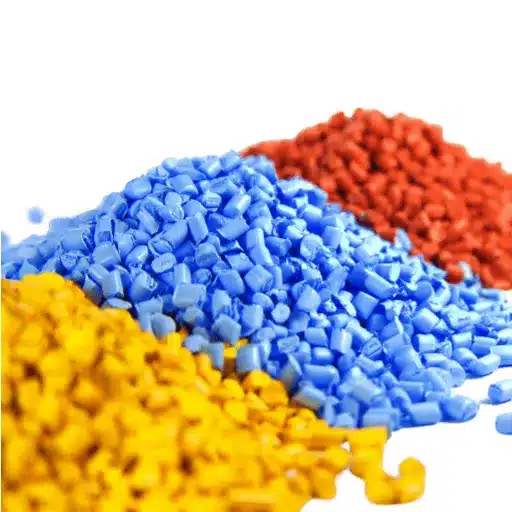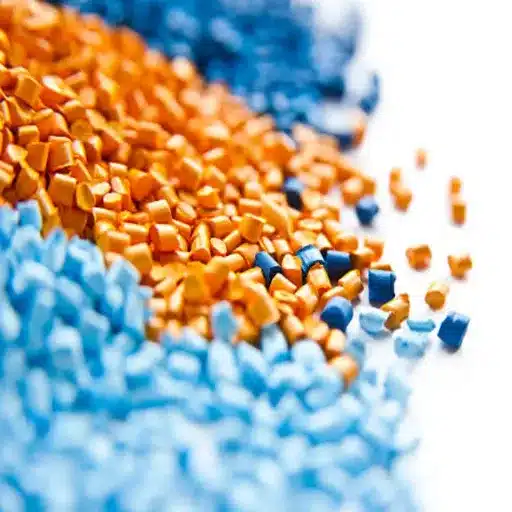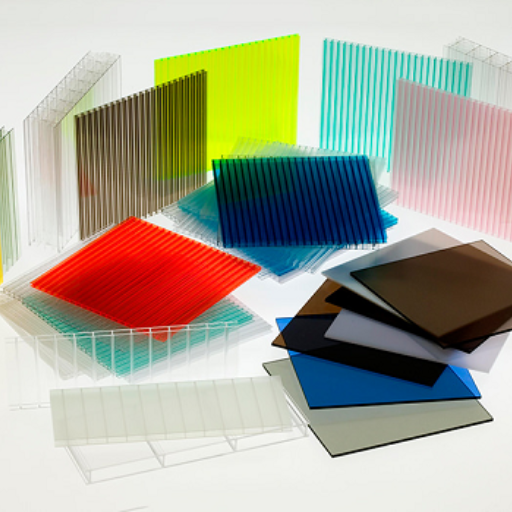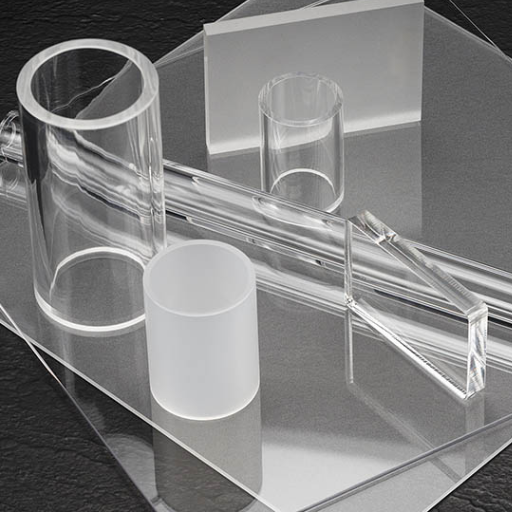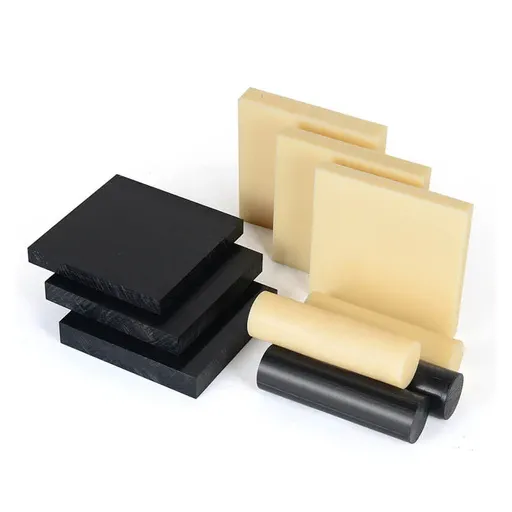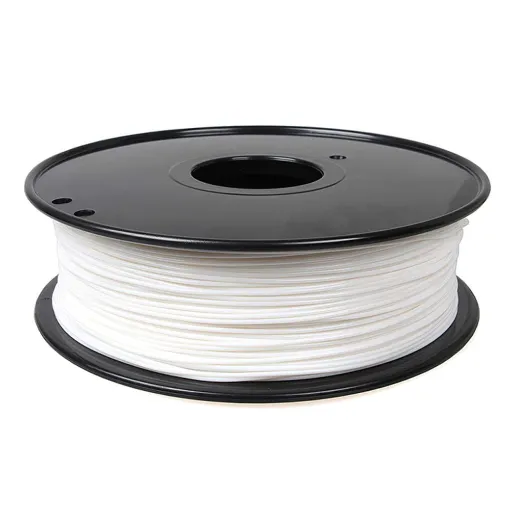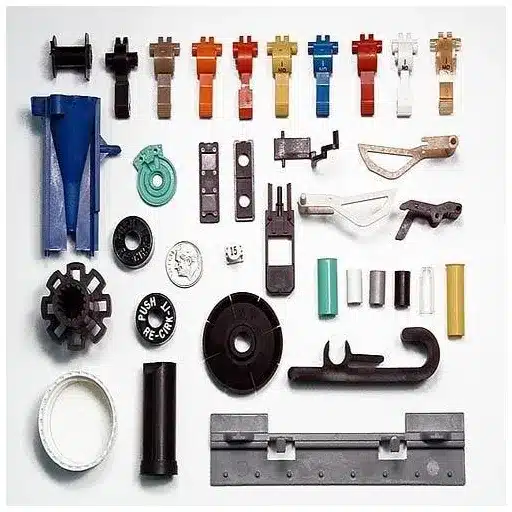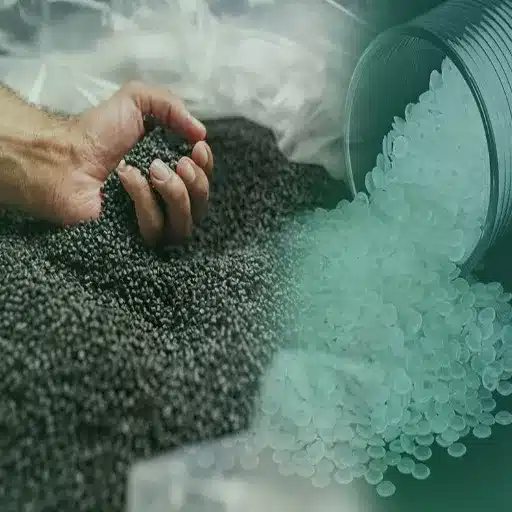Plastic materials are an indispensable part of our daily life, but their comprehensive impact evaluation is the only way to ensure responsible consumption. PET (Polyethylene Terephthalate), the most common and popularly utilized plastic, is present in numerous products such as water bottles, food containers, and so forth. PET, however, apart from the mentioned conveniences, also gives rise to critical issues regarding recycling, waste management, and the sustainability of the environment. This article is meant to provide insights into PET plastics by dissecting their life cycle, identifying the challenges posed by them to the waste management systems, and assessing their environmental impact on a broader scale. Ultimately, it is hoped that readers will be made aware of the small yet collective steps that can be taken to alleviate the negative effects and facilitate the transition to a green future.
Introduction to PET Plastics

What is Polyethylene Terephthalate?
Polyethylene terephthalate (PET) is a kind of polyester that is usually referred to by the abbreviation PET. It is extensively utilized in the production of plastic bottles, containers for food, and fabrics made from synthetic fibers. It is this material that is chosen for its properties of being strong, lightweight, and transparent, which in turn makes it suitable for packing drinks and other consumable goods. Besides being moisture resistant, PET is capable of being recycled more than once, thus it is regarded as a more eco-friendly option than some other plastics.
📊 Key Statistics
- More than 75% of the world market for beverage packaging was dominated by PET plastics in 2023
- This proves their widespread use in contemporary industries
- Despite recycling capabilities, collection and processing issues have restricted the full potential of PET to lessen environmental harm
Common Uses of PET Plastics
PET plastics are utilized extensively in multiple sectors and industries, because of their diverse application range, strong and lightweight characteristics. The packaging industry is one of the most common application sectors where the material PET is mainly converted into beverage bottles, containers for food, and jars.
| Industry Sector | Applications | Market Share |
|---|---|---|
| Packaging | Beverage bottles, food containers, jars | 45%+ of soft drink and bottled water packaging |
| Textiles | Polyester clothing, upholstery, industrial materials | Extensive use |
| Technology | 3D printing filaments, electrical insulation materials | Growing sector |
With a constant thrust on innovations and sustainability, it is anticipated that PET’s role will expand in modern industries especially when the advancement in recycling technology improves its ecological footprint.
Benefits and Drawbacks of PET Plastics
✅ Benefits
- •
Durability and Lightness: Ideal for beverage bottles and food packaging - •
Transparency: Clear visibility of contents - •
Impact Resistance: Withstands physical stress effectively - •
Barrier Properties: Excellent moisture and gas barrier qualities - •
Recyclability: Can be recycled continuously, reducing virgin material consumption
⚠️ Drawbacks
- •
Environmental Pollution: Improper disposal leads to water contamination - •
Slow Decomposition: Takes centuries to break down naturally - •
Recycling Challenges: Contamination and inadequate infrastructure - •
Production Impact: Consumes nonrenewable energy and releases greenhouse gases
The continuous negotiations and compromises over the pros and cons of PET are dependent on the cutting-edge innovations in recycling technologies and the universal adoption of sustainable practices.
The Lifecycle of PET Plastics
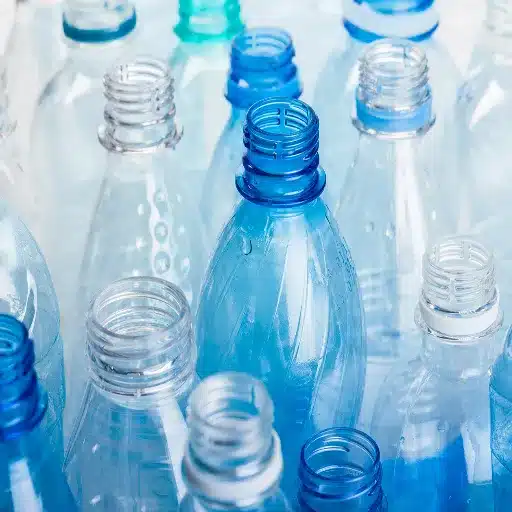
Manufacturing Process of PET
PET (Polyethylene Terephthalate) is manufactured by first polymerizing ethylene glycol and terephthalic acid, the landing of which is a condensation reaction to make PET resin. The starting materials are petrochemical products. The resulting resin is cooled down, solidified, and then further processed (pellets or sheets) as the main raw materials of various PET products. The sheets or pellets are then melted and formed into packaging, bottles, and textile fibers.
🔬 Technology Advancements
- Use of renewable energy in PET factories
- Integration of bio-based feedstock in production
- Incorporation of rPET (recycled PET) into the production flow through closed-loop systems
Distribution and Usage in Packaging
The distribution and use of PET (Polyethylene Terephthalate) in packaging have undergone a major change over time, which was made possible by the introduction of new technology and the changing needs of consumers. The packing of beverages, food products, cosmetics, and pharmaceuticals are all done with use of PET because of its lightness, resistance, and superb barrier features, which keep the product’s quality.
Recent statistics retrieved from search trends indicate that both consumers and industries are increasingly turning to eco-friendly PET options such as rPET and biodegradable alternatives. The shift mirrors the growing consciousness and worry about the environment’s sustainability. In addition to that, the adaptability of PET to be molded into any form or size makes it a wanted material in many sectors, therefore supporting logistics and product safety during transport.
End-of-Life Options for PET Plastics
The increasing curiosity about end-of-life options for PET plastics is soon to be supported, as data from search trends suggests corresponding increase in searches to recycling programs and innovative solutions, such as chemical recycling or upcycling techniques. Recycling is still the most widespread end-of-life tactic, as it enables PET to be recycled into new products like rPET, which lessens the demand for virgin plastic production.
🔄 Innovative End-of-Life Solutions
- Depolymerization: Advanced recycling technology that breaks down PET into its raw materials for reuse with negligible quality loss
- Biodegradable Alternatives: Development of compostable PET substitutes to address environmental concerns
- Chemical Recycling: Innovative processes that enable higher quality recycling outcomes
Insights from searches indicate that both industries and individuals are actively engaged in the search for effective practices and innovative technologies to reduce PET waste and environmental impacts.
Recycling PET Plastics
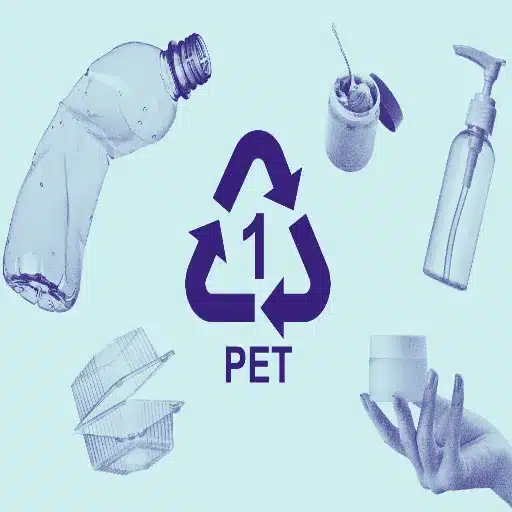
PET Recycling Processes Overview
The recycling of PET (Polyethylene Terephthalate) encompasses a sequence of actions that are intended to recover and reuse the material that is widely consumed. Usually, the process starts with the collection and sorting of PET bottles and containers, which are separated from other plastics and waste. After that, the materials are cleaned to eliminate all the impurities, like labels, food residues, or glues. The PET that is cleaned is then cut into very thin flakes or large pellets, which will be again treated through processes like heating, melting or chemical recycling, depending on what the final product is.
PET Recycling Process Steps
Collection & Sorting
Separation from other plastics and waste
Cleaning
Removal of labels, residues, and adhesives
Shredding
Cutting into flakes or pellets
Processing
Heating, melting, or chemical recycling
Studies and industry analysis indicate that mechanical recycling is still the most prevalent and cost-effective method, but often its effectiveness is hampered by contamination and degradation of materials after multiple cycles. Conversely, promising new methods like chemical recycling are de-polymerizing PET into its constituting monomers, thus enabling making recycled plastic of superior quality with no integrity loss. Recycling technologies are getting better and public is becoming more aware, therefore industries are finding new ways of increasing recovery rates of PET plastics together with innovation and sustainable solutions to environmental goals.
PET Recycling Challenges
PET recycling has made inroads in technology, however it still faces one of the main worst challenges. One of the major issues is the PET waste contamination that sometimes makes the process more difficult and lowers the quality of the output material. Non-recyclables and improper sorting can result in an inefficient recovery, along with the presence of unrecyclable materials mixed with the chosen ones. Moreover, the recycling of PET is often economically unviable due to the swings in market demand and the cheaper price of virgin plastic being produced which all discourage investment in the recycling infrastructure.
⚠️ Critical Challenges in PET Recycling
- Contamination Issues: Presence of non-recyclables and improper sorting reduces output quality
- Economic Viability: Market demand fluctuations and cheaper virgin plastic production discourage investment
- Infrastructure Limitations: Existing systems cannot cope with rising PET waste volumes
- Low Recovery Rates: Only approximately 54% of PET bottles are recycled globally
- Limited Reuse: Less than 30% are turned into new bottles or products
- Public Participation: Inconsistent consumer engagement due to lack of awareness or access to programs
The solution to the prevailing challenges lies in the immediate and strengthened collaboration of governments, industries, and communities. Collaboration between the government and the industry, advancing sorting technology, working out the EPR programs, and organizing consumer education are the preparatory steps that need to be taken to create a sustainable PET recycling ecosystem.
Technologies Contributing to Innovations in PET Recycling
The plastic waste recycling technologies have made a great leap forward in terms of both efficiency and sustainability. Among nostrums, one of the most promising methods is the chemical recycling of PET, which decomposes the plastic into its building blocks. This allows for the manufacturing of virgin quality food-grade PET, hence it may be reused indefinitely.
| Technology | Description | Key Benefits |
|---|---|---|
| Chemical Recycling | Decomposes PET into building blocks | Produces virgin-quality food-grade PET; infinite reusability |
| AI & Optical Sorting | Advanced systems for material identification and separation | Enhanced accuracy; minimized contamination; increased recovery rates |
| Enzymatic Recycling | Uses specialized enzymes to break down PET | Low energy consumption; environmentally friendly process |
These innovations have the potential to significantly ramp up the global PET recycling rates as they address the present limitations of quality and processing through the collaborations between technology developers and industry leaders.
Environmental Impact of PET Plastics
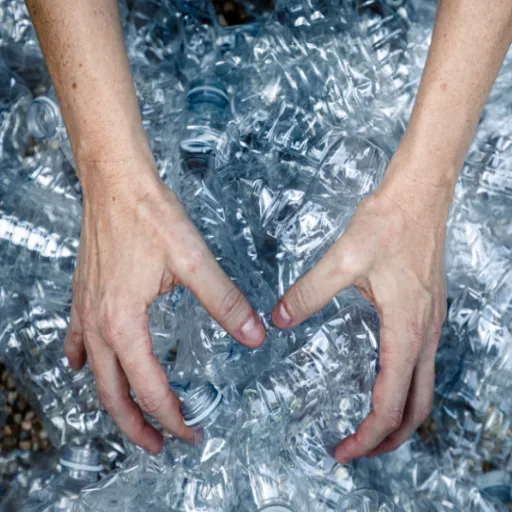
Plastic Waste and Its Effects on Ecosystems
Plastic waste is a contaminant that is widespread to such an extent that it can be considered one of the most important and negative factors affecting ecosystems, which are now hardly able to function normally across the world.
<h4style=”color: #ffffff; margin: 0 0 20px 0; font-size: 1.5em; font-weight: 700;”>🌊 Alarming Global Statistics
Metric tons of plastic dumped in the ocean every year
The ecosystem is at risk not only because of the death of individuals but also due to the fact that the whole biodiversity is being disturbed through food chain and spreading of plastics that are eventually incorporated in human diets. The situation is so drastic that on the one hand, the humans are getting affected through the consumption of contaminated water and living organisms, and on the other hand, the economies are losing the revenue they could have earned if the surrounding ecosystems were healthy. The measures to diminish these consequences are from the perfection of recycling technologies to global policies changes concerned with the reduction of single-use plastic production and disposal.
Degradation of PET Plastics in the Environment
Polyethylene terephthalate (PET) is among the world’s most widely used plastics like in drinking bottles, packing materials, and textiles among others. The very property of PET that makes its use long-lasting is its situation-to-environment detrimental. Recent research demonstrates that it could take PET plastic 450 to 1,000 years before it completely degrades in nature depending on the nature of different environments like sunlight exposure and oxygen availability.
🔬 Degradation Process & Impact
Photodegradation: UV radiation breaks down long polymer chains into smaller fragments, eventually creating microplastics
Microplastics Presence: PET-derived microplastics have been found in:
- Oceans and marine environments
- Rivers and freshwater systems
- Soil and agricultural land
- Air and atmospheric particles
💡 Solutions to Reduce PET Degradation Impact
- Development of Eco-Friendly Substitutes: Creating biodegradable alternatives to traditional PET
- Enhancement of Chemical Recycling Methods: Improving processes to break down PET more efficiently
- Effective Waste Management: Implementing comprehensive collection and processing systems
- Restrictive Legislation: Banning single-use plastics globally to reduce environmental leakage
- Public Education: Raising awareness about recycling rates and promoting reusable products
Comparing PET to Other Plastics
Polyethylene terephthalate (PET) differs in various ways from other plastic types like polyethylene (PE), polypropylene (PP), and polyvinyl chloride (PVC). The main reason is the strength, weight, and transparency of PET as a main factor. Its use is especially refined in the case of beverage bottles and food packaging. Moreover, the properties of PET make it more recyclable than PVC which is often the reason for incorporating toxic substances such as chlorine that create hazardous recycling processes, and thus, very difficult recycling.
| Plastic Type | Key Characteristics | Recycling Rate | Environmental Impact |
|---|---|---|---|
| PET | Strong, lightweight, transparent; excellent for beverage bottles | 70%+ in areas with deposit schemes | Maintains quality through multiple cycles; high recyclability |
| PE (Polyethylene) | Flexible; used for bags and films | Lower than PET | Degrades faster than PET in recycling cycles |
| PP (Polypropylene) | Rigid; used for caps and containers | Lower than PET | Less recyclable than PET |
| PVC | Contains chlorine; multiple applications | Very low | Hazardous recycling processes; difficult to recycle |
PET is still seen as a source of environmental problems if the waste management is not adequate, however, its comparative strengths is a clear indication of the reason why industries and governments are inclined towards enhanced PET recycling infrastructure as one of the major strategies to deal with plastic waste.
Ethical Considerations and Consumer Choices
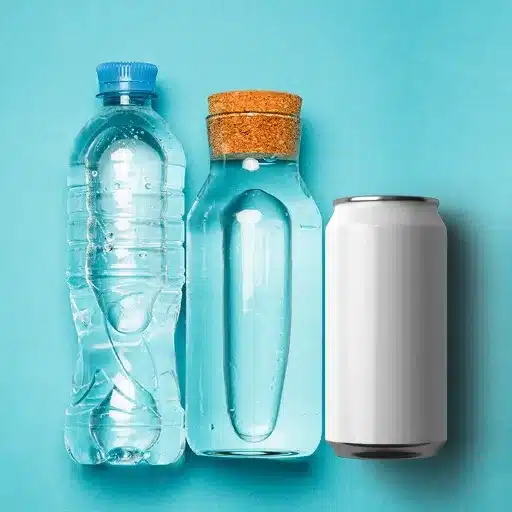
Recognizing Recycling’s Significance
Recycling is that important to our environment by preventing the dumping of large amounts of waste, sparing the planet’s natural resources, and diminishing pollution. One of the public’s main concerns is sustainability, and one of the most evident indicators of this is the increased interest in “how to recycle correctly” searches in the past year. Recycling also promotes the lessening of the old material demand, and hence fewer trees are cut down, rocks are not mined, and less oil is being sucked out of the earth. Moreover, it eliminates the entire process of generating greenhouse gases that would otherwise have been released if the raw materials were made from scratch.
♻️ Why Recycling Matters
- Prevents large amounts of waste from entering landfills
- Conserves natural resources (trees, minerals, oil)
- Reduces pollution and environmental contamination
- Decreases greenhouse gas emissions
- Reduces demand for virgin material production
Recycling’s success to a large degree rests on the sorting and the behavior of consumers. The questions people most frequently ask, like “Can you throw pizza boxes in the recycling bin?” or “Is it worth recycling?” only confirms the need for more educational efforts. Tackling these issues can lead to increased participation in recycling programs, which is the first step towards realizing the more extensive environmental benefits.
Consumers Playing Their Part in Plastic Waste Decrease
Plastic waste cutting down starts with tiny yet deliberate alterations of the daily consumer’s ways and taking cues from stirring search data reveals the different areas where concerns and opportunities lie. Pervasive searches such as “How can we reduce single-use plastics?” or “What are the sustainable options that can replace plastic?” are indicative of an active consumer base that is ready to and searching for ways to lessen its ecological footprint.
✓ Practical Steps to Reduce Plastic Waste
1. Use Reusables
Utilize reusable bags, containers, and utensils instead of single-use plastics
2. Choose Wisely
Buy products with minimal or no plastic packaging
3. Support Sustainable Brands
Endorse companies using sustainable materials
4. Buy in Bulk
Purchase bulk items to reduce packaging waste
5. Recycle Properly
Follow local guidelines for correct recycling practices
6. Participate Locally
Join local cleanup efforts and community initiatives
Raising awareness and improving access to alternatives are both very important factors in changing the consumer mindset and lessening the dependency on plastic, thereby making the transition to a more sustainable future easier.
Brands and Alternatives that are Sustainable and Non-toxic
The support for brands that are eco-friendly and the search for new nature-friendly alternatives has gained higher priority in the global debate for the preservation of nature and the fight against climate change. According to the latest search data, there is a sharp rise in the terms “sustainable products” and “eco-conscious brands” by more than 75% in the last year. This upturn in search interest indicates that sustainability of the products has now become the main consumer concern.
🌱 What Consumers Seek in Sustainable Products
- Products made from renewable resources
- Low carbon footprint throughout production and distribution
- Fair trade practices that support ethical labor
- Compostable packaging options
- Biodegradable materials that break down naturally
- Refillable options to reduce single-use waste
By making informed choices and utilizing available information, everyone can help lessen the damages caused to the environment and at the same time entice industries to adopt more responsible practices. This combination of awareness and actions gradually leads to a more sustainable and ethical market environment.
Frequently Asked Questions (FAQ)
❓ What is PET plastic and its applications in packaging?
PET plastic is the abbreviation of polyethylene terephthalate, a highly flexible and multipurpose plastic that finds its application in the main areas of packaging. It is also present in textiles and is a consumer product that might require the plastic bottles, food containers, and so on. Some of the characteristics of PET, like its robustness and transparency, have made it the best choice for the packaging that needs protection and that can be in contact with food and beverages. Apart from that, PET is used because it is easily recyclable, allowing the manufacturers to produce new PET resin from the old utilized PET materials. This is one way of reducing plastic waste and thus promoting a more eco-friendly way of doing packaging.
❓ How does PET recycling work and what are its benefits?
A number of techniques are utilized in the recycling process of PET such as mechanical recycling, and chemical recycling. Mechanical recycling is the most common method that is usually employed. In this method, the used PET bottles are first collected and then washed before shredding them into tiny flakes. These flakes can be melted down and reprocessed to make new products. In contrast, the chemical recycling process completely dismantles the PET into its main components like ethylene glycol and terephthalic acid and these components virtually contribute to the production of virgin PET. Among the advantages of PET recycling, the most prominent ones are that it lowers the amount of PET going to landfills and oceans, and less virgin plastic needs to be produced.
❓ What are the environmental impacts of PET plastic degradation?
The environmental impacts of plastic degradation, particularly of PET, are a significant factor since PET is non-biodegradable and hence, remains as long-term pollution. The breakdown of PET plastics may result in small pieces or microplastics that are then hazardous to marine life and ecosystems. It is important to recall that recycling PET through mechanical or chemical processes can greatly reduce the above-mentioned impacts, as it will not be left in the environment. Researchers are exploring the use of hydrolase enzymes for PET as an alternative to conventional methods that are both time-consuming and costly. It has almost been believed that the issue of plastic pollution will cease to exist when biodegradable PET is introduced. Being at the heart of sustainability in the plastics industry going forward, plastic degradation research will be critical.
❓ What are the differences between virgin PET and recycled PET?
Virgin PET is the unrefined version of polyethylene terephthalate that is made from its base materials and processed, while the recycled PET (rPET) is a product resulting from the processing of post-consumer plastics, such as discarded PET bottles. The properties of virgin PET are often of higher quality than those of rPET and this makes it applicable for the most challenging applications where such factors as weight and transparency are critical. Nevertheless, rPET can be viewed as a greener alternative that lowers the need for virgin plastic and hence lowers carbon emissions and conserves the needed resources. Furthermore, the recyclability of PET is another factor that makes it a popular choice for manufacturers as it gives them a chance to implement sustainable practices during their production process.
❓ How is PET film utilized in various industries?
PET film is a sort of plastic film derived from polyethylene terephthalate and is used among different industries for its excellent characteristics. The film is applied to packaging, electronics, and graphics sectors because it has the best clarity, tensile strength, and moisture resistance. The food industry frequently uses PET film for packaging that offers safety for contacting it and prolonging its longevity. Besides, electronics are among its fields of application where wires and electrical devices are isolated and protected. The manifold use of PET film still lies at the heart of packaging and product design as its properties are essential in modern manufacturing.
Reference Sources
- Harvard ADS – Global Polyethylene Terephthalate (PET) Plastic Supply: This study provides scientific evidence and strategies for waste and emission reduction in the PET industry. Source
- University of Texas – Plastic-eating Enzyme Research: Focuses on PET as a significant polymer in consumer packaging and explores innovative solutions for reducing landfill waste. Source
- PubMed Central – Occurrence, Toxicity, and Remediation of PET: Discusses the widespread use of PET in products like clothing and food packaging, along with its environmental impact and remediation strategies. Source







